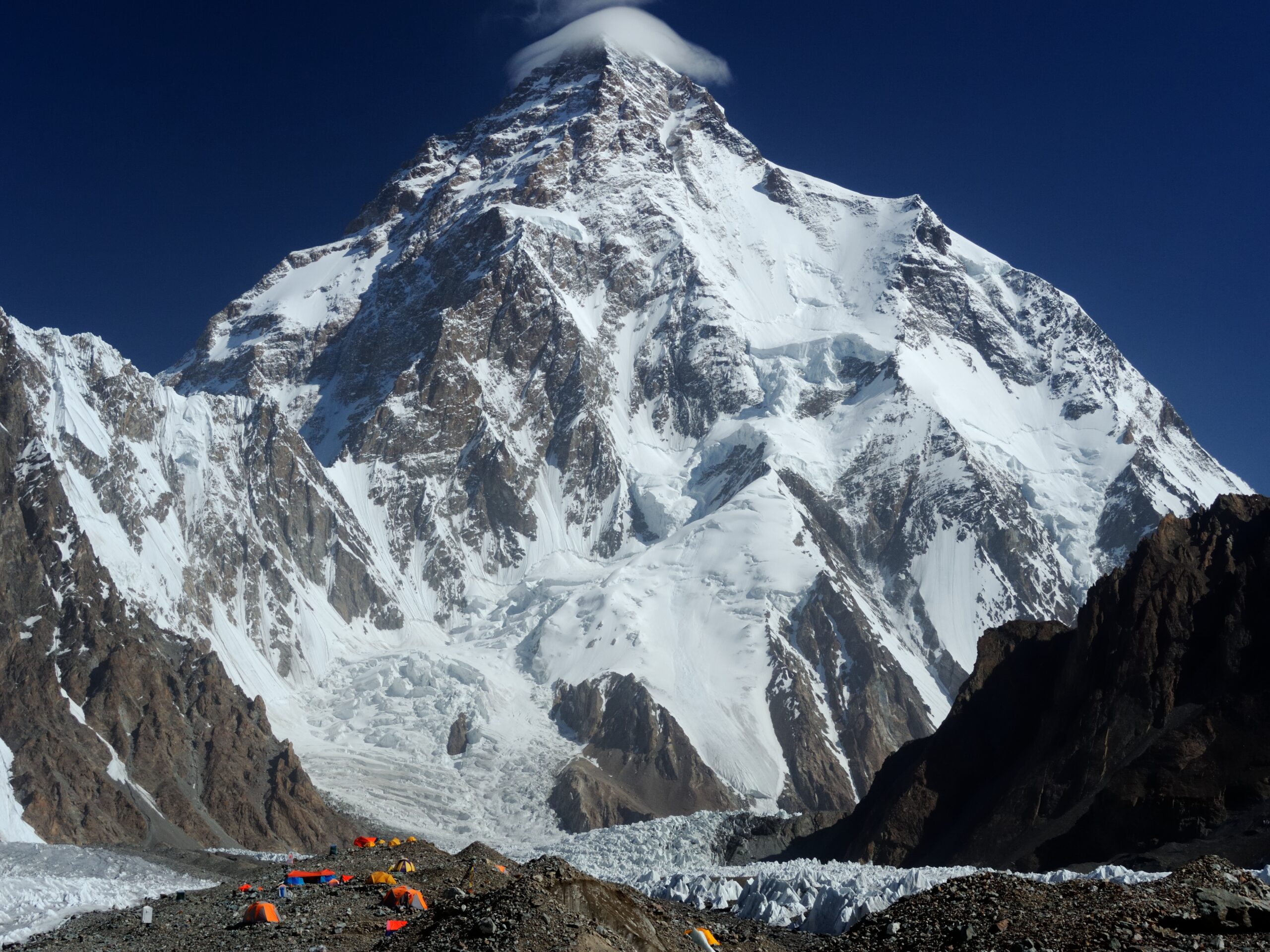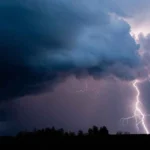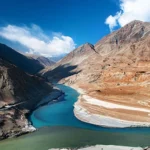
Mount K2, often referred to as the “Savage Mountain,” is the second-highest peak in the world, standing at 28,251 feet (8,611 meters) above sea level. It is located on the border between Pakistan and China in the Karakoram Range of the Himalayas. K2 is renowned for its extreme difficulty and danger in climbing, earning a reputation as one of the most challenging and deadly peaks on the planet.
Here are some interesting facts and details about Mount K2:
The name “K2” is derived from the Karakoram Range’s grid-like system of surveying peaks. It is the second peak in the Karakoram to be measured and labeled “K,” with “K1” being Masherbrum, another prominent peak in the range.
K2 is notorious for its extreme technical difficulty, unpredictable weather, avalanches, and high fatality rate. Climbers face steep and icy slopes, crevasses, and the ever-present risk of rockfall.
The first successful ascent of K2 was made by an Italian team led by Ardito Desio in 1954. The climbers were Lino Lacedelli and Achille Compagnoni.
K2 has a high fatality rate among climbers, earning it the nickname “Savage Mountain.” Approximately one person dies on the mountain for every four who reach the summit, making it one of the deadliest peaks in the world.
The most commonly used routes to the summit of K2 are the Abruzzi Spur on the Pakistan side and the North Ridge on the Chinese side. These routes pose significant technical challenges.
The climbing season for K2 is typically during the summer months, from June to August, when the weather is relatively less severe. However, even during this period, climbers must contend with harsh conditions.
Despite the risks, climbers are drawn to K2 for its stunning views, challenging terrain, and the allure of conquering one of the world’s tallest peaks.
The trek to K2 Base Camp is a popular adventure for those who do not attempt the summit. The base camp offers breathtaking views of the mountain and is a hub for trekkers and climbers.
The region around K2 is known for its natural beauty and biodiversity. Efforts are ongoing to conserve the environment and preserve the unique flora and fauna of the Karakoram Range.
K2 has captured the imagination of adventurers and mountaineers worldwide, attracting climbers from various countries who seek to challenge themselves on this formidable peak.
Locally, K2 is known as “Chogori,” which means “Big Mountain” in the Balti language. This name reflects the awe and reverence the mountain commands among the local communities.
As of 2021, K2 remained the only 8,000-meter peak that had not been successfully summited during the winter season. Winter ascents of K2 are exceptionally challenging due to extreme cold, high winds, and deep snow.
The 2008 climbing season on K2 was particularly tragic, with a series of accidents and avalanches. It resulted in the loss of 11 climbers, making it one of the deadliest seasons in the mountain’s history.
K2 straddles the border between Pakistan-administered Gilgit-Baltistan and China’s Xinjiang region. The mountain has played a role in territorial disputes between the two countries.
K2 is part of a group of peaks in the Karakoram Range known as the “Eight-thousanders,” which are mountains that exceed 8,000 meters (26,247 feet) in elevation. Successfully summiting all 14 of these peaks is considered a mountaineering “Triple Crown,” and K2 is often the last to be climbed by those attempting this feat.
The Bottleneck is a notorious section of the climbing route on K2, located just below the summit. It’s a steep, narrow couloir filled with unstable ice and seracs, making it one of the most treacherous spots on the mountain.
Climbers who attempt K2 often require specialized cold-weather gear, including down suits, insulated boots, and oxygen tanks. The equipment is essential for surviving the harsh conditions at high altitudes.
To assist climbers in their ascent, fixed ropes are often used on the most challenging sections of K2’s routes. These ropes are secured in place by experienced climbers and provide a lifeline for those ascending and descending.
Many expeditions to K2’s base camp begin with a trek through the stunning Baltoro Glacier, which is one of the largest glaciers outside of the polar regions. The glacier offers breathtaking views of the Karakoram Range.
Mount K2 and the surrounding region hold cultural and historical significance for the indigenous people of Baltistan, who have a rich tradition of mountaineering and a deep connection to the mountain.
Due to the extreme altitude and thin air on K2, climbers often use compressed air bottles to provide supplemental oxygen during their ascent. This is essential to combat altitude sickness and maintain their physical and mental capabilities at high altitudes.
K2 is notorious for its avalanche-prone slopes, particularly in areas like the Bottleneck. Climbers must be vigilant about avalanche conditions and often make critical decisions based on the mountain’s stability.
The ratio of successful summits to fatalities on K2 is among the lowest of all the world’s 8,000-meter peaks. This highlights the immense risk involved in attempting to climb the mountain and the unforgiving nature of its terrain.
Often referred to as the “Ogre,” Baintha Brakk is a challenging peak near K2 in the Karakoram Range. Its fearsome reputation stems from its difficult climbing routes and the tragic history of expeditions to its summit.
Despite its reputation for difficulty, K2 has seen notable climbing achievements. For example, in 1977, Reinhold Messner and Peter Habeler completed the first ascent without supplemental oxygen, a significant milestone in high-altitude mountaineering.









